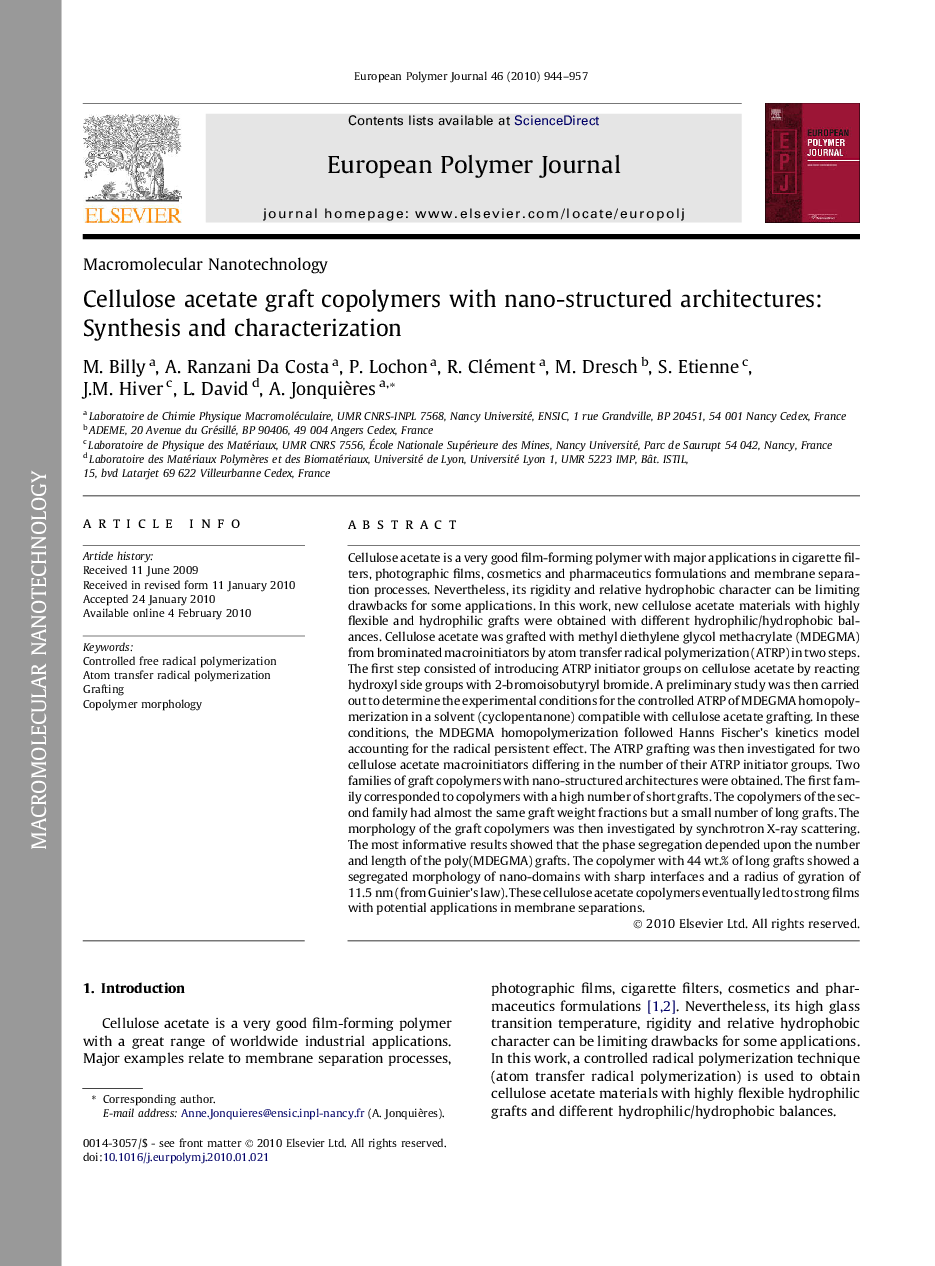| کد مقاله | کد نشریه | سال انتشار | مقاله انگلیسی | نسخه تمام متن |
|---|---|---|---|---|
| 1396084 | 984163 | 2010 | 14 صفحه PDF | دانلود رایگان |

Cellulose acetate is a very good film-forming polymer with major applications in cigarette filters, photographic films, cosmetics and pharmaceutics formulations and membrane separation processes. Nevertheless, its rigidity and relative hydrophobic character can be limiting drawbacks for some applications. In this work, new cellulose acetate materials with highly flexible and hydrophilic grafts were obtained with different hydrophilic/hydrophobic balances. Cellulose acetate was grafted with methyl diethylene glycol methacrylate (MDEGMA) from brominated macroinitiators by atom transfer radical polymerization (ATRP) in two steps. The first step consisted of introducing ATRP initiator groups on cellulose acetate by reacting hydroxyl side groups with 2-bromoisobutyryl bromide. A preliminary study was then carried out to determine the experimental conditions for the controlled ATRP of MDEGMA homopolymerization in a solvent (cyclopentanone) compatible with cellulose acetate grafting. In these conditions, the MDEGMA homopolymerization followed Hanns Fischer’s kinetics model accounting for the radical persistent effect. The ATRP grafting was then investigated for two cellulose acetate macroinitiators differing in the number of their ATRP initiator groups. Two families of graft copolymers with nano-structured architectures were obtained. The first family corresponded to copolymers with a high number of short grafts. The copolymers of the second family had almost the same graft weight fractions but a small number of long grafts. The morphology of the graft copolymers was then investigated by synchrotron X-ray scattering. The most informative results showed that the phase segregation depended upon the number and length of the poly(MDEGMA) grafts. The copolymer with 44 wt.% of long grafts showed a segregated morphology of nano-domains with sharp interfaces and a radius of gyration of 11.5 nm (from Guinier’s law). These cellulose acetate copolymers eventually led to strong films with potential applications in membrane separations.
Figure optionsDownload as PowerPoint slide
Journal: European Polymer Journal - Volume 46, Issue 5, May 2010, Pages 944–957